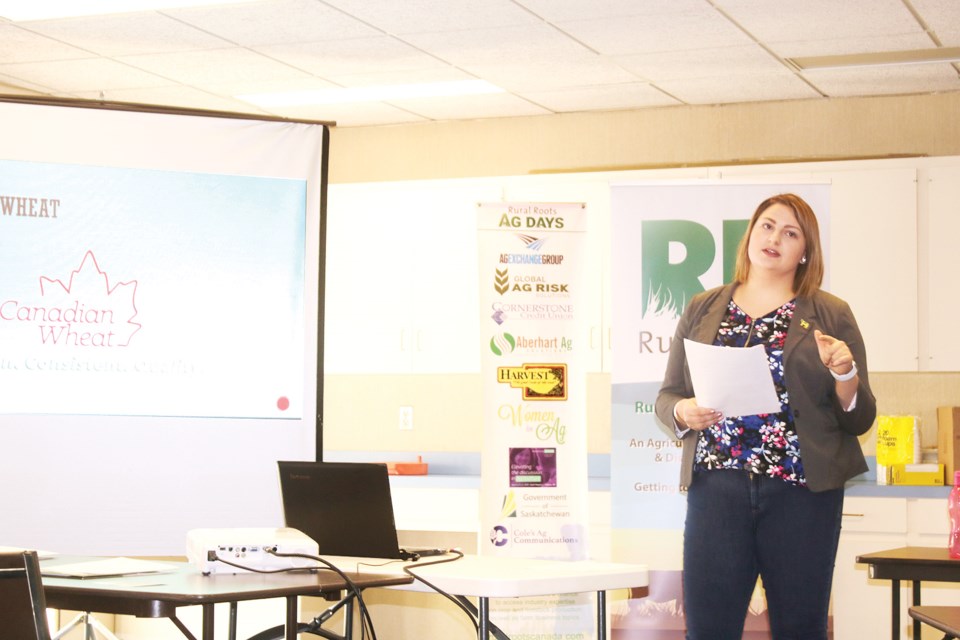Kaitlyn Kitzan grew up on a farm near Theodore, where she learned to appreciate the industry of agriculture.
Following graduation from high school Kitzan headed to the University of Saskatchewan to study agriculture and bio-resources because she said she “really wanted to be a solution” in terms of some of the challenges the industry is and will be facing.
In addition to her studies Kitzan has been active is promoting the idea of finding solutions, including taking part in hackathon, where a problem is given and teams have a set amount of time to offer possible solutions.
Being active in getting the message of farming out has created opportunities for the third-year university student including being part of a recent youth delegation to visit Peru to talk agriculture, and other Canadian export sectors.
“Why I love agriculture the most, it’s a chance to put Canadian agriculture products on a global stage,” she said at the Rural Roots Ag Day held at the Yorkton branch of the Western Development Museum Friday.
Kitzan was one of 10 youth delegates taking part in the Global Ag Vision trip. She said the program is designed specifically to allow young Canadians to “put Canada on a global stage.”
Among the 10 students Kitzan was the only one who was raised on a farm.
To be part of the program participants had to find industry sponsors which they then had a mandate to promote in Peru. Kitzan’s primary supporter came from the Western Canadian Wheat Growers Association and Sask Wheat. She said being focused on wheat in Peru was timely as that country “is looking at new regulations on Canadian wheat … Most of my conversations in Peru was on Canadian wheat.”
While in Peru, Kitzan and the group met with representatives of the Peru government, the Canadian Chamber of Commerce there, and with universities doing work in the sector.
The issue for Peru is the amount of weed seeds they find in wheat imported from Canada, said Kitzan, adding they are not treating American wheat in the same way.
As a result, Kitzan said Canada is focusing a lot of effort in promoting the idea that Canadian wheat is clean and of consistent quality.
Wheat is Canada’s largest export to Peru, with gold the key commodity coming back, said Kitzan. She added Peru is looking to diversify its exports into more agricultural goods, such as green and white asparagus.
Agriculture is Peru’s “second largest economic driver,” noted Kitzan, behind only mining. She added, “60 per cent of farms are small scale.”
Kitzan said there are also opportunities to increase agricultural exports to Peru from Canada, in particular in the area of pulse crops because of low tariffs, for frozen pork and beef, and for bovine and poultry genetics.
In general, goods flow between Canada and Peru relatively smoothly. The two countries have had a free trade agreement in place for the last decade.
Peru has a rather diverse nation, a dry, desert like strip along the coast, the mountainous region of the Andes range, and then an area of the Amazon jungle.
The mountains do allow for the growing of coffee, which is another major export.
Since there is an effort to increase agriculture an issue is “burning the Amazon jungle to increase agricultural land,” said Kitzan.
While only in Peru a short time, Kitzan said she did see opportunities for greater trade between the two nations, but exchanges for students and information which could lead to greater connections down the road.

